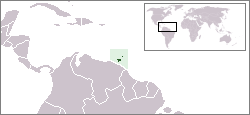|
Rupela Horridula
''Rupela horridula'' is a moth in the family Crambidae. It was described by Carl Heinrich in 1937. It is found in Brazil (Rio de Janeiro), the Guianas and Trinidad. The wingspan The wingspan (or just span) of a bird or an airplane is the distance from one wingtip to the other wingtip. For example, the Boeing 777–200 has a wingspan of , and a wandering albatross (''Diomedea exulans'') caught in 1965 had a wingspan ... is 22–32 mm. The wings are white. References Moths described in 1937 Schoenobiinae Taxa named by Carl Heinrich {{Schoenobiinae-stub ... [...More Info...] [...Related Items...] OR: [Wikipedia] [Google] [Baidu] |
Carl Heinrich
Carl Heinrich (1880 New York City – 1955) was an American entomologist. Life He studied Greek and drama at the University of Chicago, he moved to Washington D.C., in 1902, where he worked in business. In 1908, he went to New York to study music. Heinrich moved back to Washington and in 1913 joined the United States Department of Agriculture. He initially worked on applied entomology but later switched to specialise in the study of Lepidoptera. He was editor of the ''Proceedings of the Entomological Society of Washington ''Proceedings of the Entomological Society of Washington'' is a peer-reviewed scientific journal of entomology published by the Entomological Society of Washington. The journal was established in 1886 and is currently published four times per year ...'' from 1924 to 1926. References SIRIS - Smithsonian Institution Research Information SystemButterflies and Moths of the World - Genera authored by Carl Heinrich American lepidopterists 1880 births 19 ... [...More Info...] [...Related Items...] OR: [Wikipedia] [Google] [Baidu] |
Moth
Moths are a paraphyletic group of insects that includes all members of the order Lepidoptera that are not butterflies, with moths making up the vast majority of the order. There are thought to be approximately 160,000 species of moth, many of which have yet to be described. Most species of moth are nocturnal, but there are also crepuscular and diurnal species. Differences between butterflies and moths While the butterflies form a monophyletic group, the moths, comprising the rest of the Lepidoptera, do not. Many attempts have been made to group the superfamilies of the Lepidoptera into natural groups, most of which fail because one of the two groups is not monophyletic: Microlepidoptera and Macrolepidoptera, Heterocera and Rhopalocera, Jugatae and Frenatae, Monotrysia and Ditrysia.Scoble, MJ 1995. The Lepidoptera: Form, function and diversity. Oxford, UK: Oxford University Press; 404 p. Although the rules for distinguishing moths from butterflies are not well est ... [...More Info...] [...Related Items...] OR: [Wikipedia] [Google] [Baidu] |
Crambidae
The Crambidae are the grass moth family of lepidopterans. They are variable in appearance, the nominal subfamily Crambinae (grass moths) taking up closely folded postures on grass stems where they are inconspicuous, while other subfamilies include brightly coloured and patterned insects which rest in wing-spread attitudes. In many classifications, the Crambidae have been treated as a subfamily of the Pyralidae or snout-moths. The principal difference is a structure in the tympanal organs called the praecinctorium, which joins two tympanic membranes in the Crambidae, and is absent from the Pyralidae. The latest review by Munroe and Solis, in Kristensen (1999), retains the Crambidae as a full family. The family currently comprises 15 subfamilies with altogether 10,347 species in over 1,000 genera. Systematics *subfamilia incertae sedis **''Conotalis'' Hampson, 1919 **''Exsilirarcha'' Salmon & Bradley, 1956 *Subfamily Acentropinae Stephens, 1836 *Subfamily Crambinae Latreill ... [...More Info...] [...Related Items...] OR: [Wikipedia] [Google] [Baidu] |
Rio De Janeiro (state)
Rio de Janeiro () is one of the 27 federative units of Brazil. It has the second largest economy of Brazil, with the largest being that of the state of São Paulo. The state, which has 8.2% of the Brazilian population, is responsible for 9.2% of the Brazilian GDP. The state of Rio de Janeiro is located within the Brazilian geopolitical region classified as the Southeast (assigned by IBGE). Rio de Janeiro shares borders with all the other states in the same Southeast macroregion: Minas Gerais ( N and NW), Espírito Santo ( NE) and São Paulo ( SW). It is bounded on the east and south by the South Atlantic Ocean. Rio de Janeiro has an area of . Its capital is the city of Rio de Janeiro, which was the capital of the Portuguese Colony of Brazil from 1763 to 1815, of the following United Kingdom of Portugal, Brazil and the Algarves from 1815 to 1822, and of later independent Brazil as a kingdom and republic from 1822 to 1960. The state's 22 largest cities are Rio de Janeiro, ... [...More Info...] [...Related Items...] OR: [Wikipedia] [Google] [Baidu] |
The Guianas
The Guianas, sometimes called by the Spanish loan-word ''Guayanas'' (''Las Guayanas''), is a region in north-eastern South America which includes the following three territories: * French Guiana, an overseas department and region of France * Guyana, formerly known as British Guiana from 1831 until 1966, after the colonies of Berbice, Essequibo, and Demerara, taken from the Netherlands in 1814, were merged into a single colony * Suriname, formerly Dutch Guiana, until 1814 together with Berbice, Essequibo and Demerara In the wider context, the Guianas also includes the following two territories: * Guayana Region in eastern Venezuela ( Amazonas, Bolívar, and Delta Amacuro states), formerly the Guayana Province, alternatively known as Spanish Guayana * State of Amapá in northern Brazil, known as Portuguese Guiana (or Brazilian Guiana) History Pre-colonial period Before the arrival of European colonials, the Guianas were populated by scattered bands of native Ar ... [...More Info...] [...Related Items...] OR: [Wikipedia] [Google] [Baidu] |
Trinidad
Trinidad is the larger and more populous of the two major islands of Trinidad and Tobago. The island lies off the northeastern coast of Venezuela and sits on the continental shelf of South America. It is often referred to as the southernmost island in the West Indies. With an area of , it is also the fifth largest in the West Indies. Name The original name for the island in the Arawaks' language was which meant "Land of the Hummingbird". Christopher Columbus renamed it ('The Island of the Trinity'), fulfilling a vow he had made before setting out on his third voyage. This has since been shortened to ''Trinidad''. History Caribs and Arawaks lived in Trinidad long before Christopher Columbus encountered the islands on his third voyage on 31 July 1498. The island remained Spanish until 1797, but it was largely settled by French colonists from the French Caribbean, especially Martinique.Besson, Gerard (2000-08-27). "Land of Beginnings – A historical digest", ''Newsday Ne ... [...More Info...] [...Related Items...] OR: [Wikipedia] [Google] [Baidu] |
Wingspan
The wingspan (or just span) of a bird or an airplane is the distance from one wingtip to the other wingtip. For example, the Boeing 777–200 has a wingspan of , and a wandering albatross (''Diomedea exulans'') caught in 1965 had a wingspan of , the official record for a living bird. The term wingspan, more technically extent, is also used for other winged animals such as pterosaurs, bats, insects, etc., and other aircraft such as ornithopters. In humans, the term wingspan also refers to the arm span, which is distance between the length from one end of an individual's arms (measured at the fingertips) to the other when raised parallel to the ground at shoulder height at a 90º angle. Former professional basketball player Manute Bol stood at and owned one of the largest wingspans at . Wingspan of aircraft The wingspan of an aircraft is always measured in a straight line, from wingtip to wingtip, independently of wing shape or sweep. Implications for aircraft design an ... [...More Info...] [...Related Items...] OR: [Wikipedia] [Google] [Baidu] |
Moths Described In 1937
Moths are a paraphyletic group of insects that includes all members of the order Lepidoptera that are not butterflies, with moths making up the vast majority of the order. There are thought to be approximately 160,000 species of moth, many of which have yet to be described. Most species of moth are nocturnal, but there are also crepuscular and diurnal species. Differences between butterflies and moths While the butterflies form a monophyletic group, the moths, comprising the rest of the Lepidoptera, do not. Many attempts have been made to group the superfamilies of the Lepidoptera into natural groups, most of which fail because one of the two groups is not monophyletic: Microlepidoptera and Macrolepidoptera, Heterocera and Rhopalocera, Jugatae and Frenatae, Monotrysia and Ditrysia.Scoble, MJ 1995. The Lepidoptera: Form, function and diversity. Oxford, UK: Oxford University Press; 404 p. Although the rules for distinguishing moths from butterflies are not well establish ... [...More Info...] [...Related Items...] OR: [Wikipedia] [Google] [Baidu] |
Schoenobiinae
Schoenobiinae is a subfamily of the lepidopteran family Crambidae. The subfamily was described by Philogène Auguste Joseph Duponchel in 1846. Genera *''Adelpherupa'' Hampson, 1919 (= ''Limnopsares'' Meyrick, 1934, ''Schoenoploca ''Meyrick, 1933) *''Alloperissa'' Meyrick, 1934 *''Archischoenobius'' Speidel, 1984 *''Argyrostola'' Hampson, 1896 *''Brihaspa'' Moore, 1868 *''Calamoschoena'' Poulton, 1916 (= ''Eurycerota'' Janse, 1917) *''Carectocultus'' A. Blanchard, 1975 *''Catagela'' Walker, 1863 *''Chionobosca'' Turner, 1911 *''Cyclocausta'' Warren, 1889 *''Dejoannisia'' Vári, 2002 (= ''Schoenobiodes'' de Joannis, 1927) *''Donacaula'' Meyrick, 1890 *''Helonastes'' Common, 1960 *''Leechia'' South in Leech & South, 1901 *''Leptosteges'' Warren, 1889 *''Leucargyra'' Hampson, 1896 *''Leucoides'' Hampson, 1893 *''Niphadoses'' Common, 1960 *''Panalipa'' Moore, 1866 (= ''Microschoenis'' Meyrick, 1887) *''Patissa'' Moore, 1886 (= ''Eurycraspeda'' Warren in Swinhoe, 1890) *''Promacrochilo' ... [...More Info...] [...Related Items...] OR: [Wikipedia] [Google] [Baidu] |



